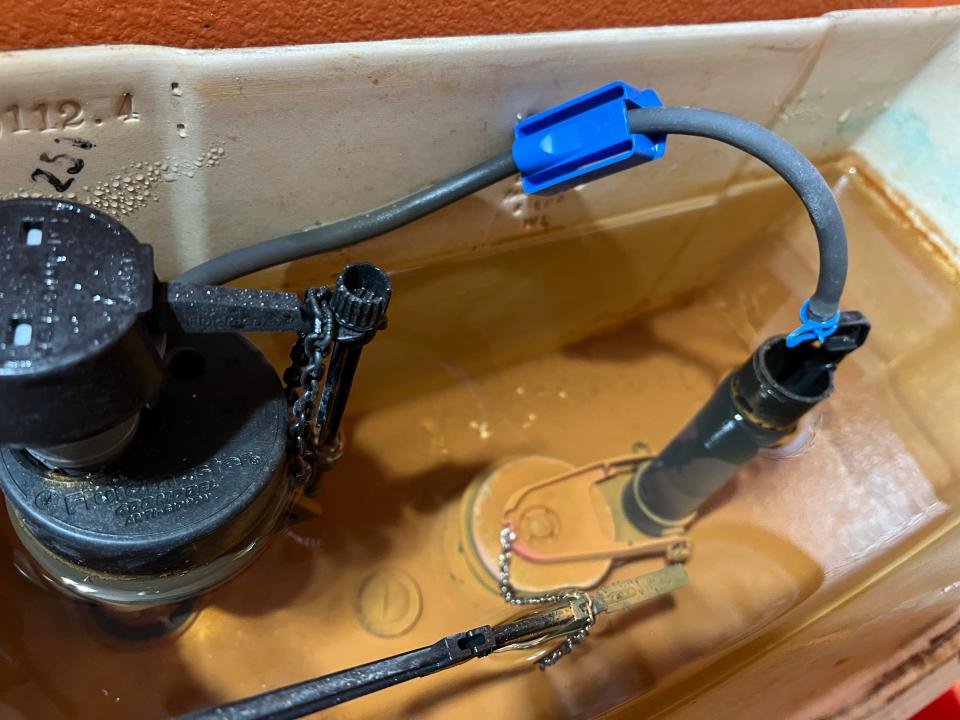Is it safe to drink smelly water from your tap? What to know about sulfur bacteria
When you turn on your tap, step in the shower or water your lawn, do you get a strong smell of rotten eggs? Do you get red stains in your sink and toilet or on your clothes?
It's not unusual, unfortunately, and it's natural. It's also annoying.
Any water system is vulnerable to contaminants and water quality issues, whether municipal or from a well, and Florida has had its share of problems.
Harmful algal and red tide blooms and the over-use of farming chemicals add toxins into the water. PFAS, a group of over 4,000 kinds of unregulated "forever chemicals" used to repel grease, oil and water which can remain in water and soil for years, has been found in increasing amounts in Florida's soil, groundwater, sewage and drinking water systems. Leaky septic tanks have wreaked havoc in the East Florida's Indian River Lagoon. Heavy rainfall, tropical storms and hurricanes cause flooding and contamination issues.
In December, the United States Environmental Protection Agency set a one-year deadline for Florida to create standards for "human health criteria" for 37 toxic pollutants which it said the state did not have.
But the most common contaminants are the ones that make your water smell bad.
Why does my water smell like eggs?
Hydrogen sulfide and sulfur bacteria. Hydrogen sulfide gas (H₂S) is naturally occurring and can happen in any well or in groundwater. It comes from:
A result of decay and chemical reactions with soil and rocks
Sulfur bacteria in the groundwater, well or plumbing system
Sulfur bacteria or chemical reactions inside water heaters
Pollution (rarely)
Is it safe to drink smelly water?
"In most cases the rotten egg smell does not relate to how clean the water is in a well," the Florida Department of Health says on its site. It should be safe, if unpleasant, to drink.
But it's possible the smell is coming from sewage or other pollution. The agency recommends having your well water tested at least once a year for total coliform bacteria or E. coli, which can cause gastrointestinal illness such as diarrhea, stomach cramps or more serious conditions.
Water with high levels of sulfate — a salt that forms when sulfuric acid reacts with another chemical, widely used in industry and gardening — can have a bitter or medicinal taste and may have laxative effects for people not used to it or anyone with a sensitive system.
How can I tell where the sulfur in my water is coming from?
Sniff your taps and see if you can spot a difference between the hot and cold water in your sink. According to the FDOT:
If the smell is only coming from the hot water faucet, it's probably your water heater.
If the smell is coming from both hot and cold water faucets. but only from water treated by a water softener, it;'s probably the water softener.
If the smell is strong from both faucets at first but fades or goes away or over time, or is inconsistent, it's probably your well or plumbing system.
If the smell is strong from both faucets at first and remains constant and persistent, it's probably in the groundwater that supplies the well.
Other signs of sulfide bacteria are black stains on silverware and plumbing fixtures and corrosion on pipe and metal parts of your plumbing.
Why is my water leaving red stains?

Sulfur bacteria produce a slime that can help other bacteria to grow, such as iron bacteria.
Iron bacteria does not commonly cause disease, the FDOH says, but it does cause stains, odd tastes (“swampy,” “oily or petroleum,” “cucumber,” “sewage,” “rotten vegetation” or “musty”) and odors. The slime from iron bacteria can clog up your pipes and can create conditions suitable for other, more dangerous bacteria to grow. The stains it leaves can be red, yellow, brown or grey. You may see a "feathery" growth in standing water, such as in a toilet.
How do I get rid of sulfur or iron bacteria in my water?
It depends on where the bacteria is. If it's in the groundwater your best bet may be drilling a new well somewhere else.
If it's in the well, plumbing system or water softener it will need to be scrubbed out and disinfected, and you'll likely need to call a professional. High levels of bacteria can be difficult and costly to remove. Common techniques involve:
Removing your pump and thoroughly cleaning the equipment
Chemical treatment with surfactants, acids and bases, and oxidizing agents such as bleach with chlorine
Aerating the water by blowing large volumes of clean air through it to vent the taste/odor compounds out.
Oxidizing the water by adding a chemical that reacts with and chemically destroys the odor compounds.
How often should I test my well water?
E. coli: Every year.
Nitrate: Every other year
Arsenic: At least once.
Lead: At least once.
The FDOH recommends checking more often "if something changes like the taste, odor or color, and after disinfection."
To find a well contractor, check the FDOH's list at waterwebprod.dep.state.fl.us/wwcvc . You can find approved water testing labs at appprod.dep.state.fl.us/labs/cgi-bin/aams/index.asp or contact your local health department.
You can look up water testing reports for utilities in your area at the Environmental Working Group's online Tap Water Database or at MyTapWater.org.
This article originally appeared on The Daytona Beach News-Journal: Smelly water and red stains. Is it safe to drink the water?

